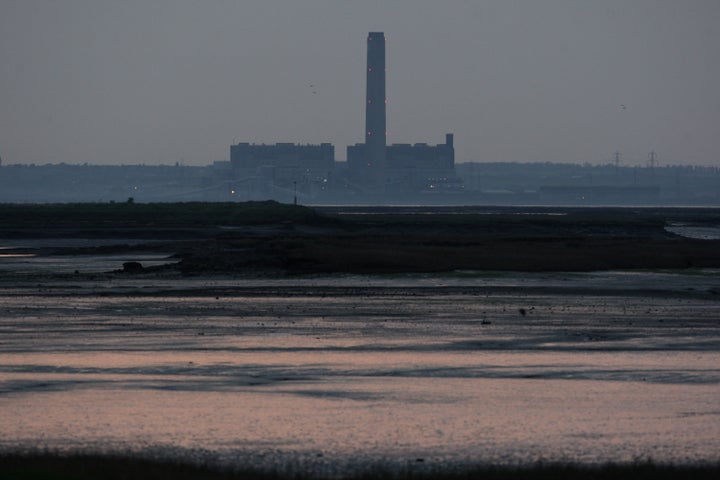
Over the past decade, nearly one hundred coal burning power plants have died in the proposal stage trumped by the legitimate objections of local communities fearful of a dirty deadly fuel that is neither cheap nor clean. Ozone and particulates from coal plants kill tens of thousands of Americans each year and cause widespread illnesses and disease. Acid rain emissions have destroyed the forests over the length of the Appalachian and sterilized one in five Adirondack lakes. Neurotoxic mercury raining from these plants has contaminated fish in every state--including every waterway in nineteen states--and poisons over a million American women and children annually. Coal industry strip mines have already destroyed 500 mountains in Appalachia, buried 2,000 miles of rivers and streams and will soon have flattened an area the size of Delaware. Finally, coal, which supplies 46% of our electric power, is the most important source of America's greenhouse gases.
Beating our deadly and expensive coal addiction will be lucrative. America's cornucopia of renewable energy resources and the recent maturation of solar, geothermal and wind technologies will allow us to meet most of our future energy needs with clean, cheap, abundant renewables. Bright Source, a solar thermal provider, has just signed contracts to provide California with 2.6 gigawatts of power annually from desert mirror farms. Construction costs are about the same per gigawatt as a coal plant and half the cost of a nuke plant. Once built, the energy is free forever. In contrast, once you build a coal plant, your biggest costs--fuel extraction and transportation and the harm from emissions--are just the beginning.
In the short term, a revolution in natural gas production over the past two years, has left America awash in natural gas and has made it possible to eliminate most of our dependence on deadly, destructive coal practically overnight--and without the expense of building new power plants.
How? Well it's pretty easy. Around 900 of America's coal plants--78% of the total--are small (generating less than half a gigawatt), antiquated, and horrendously inefficient. Their average age is 45 years, with many limping past 75. These ancient plants burn 20% more coal per megawatt hour than modern large coal units and are 60-75% less fuel efficient than high-efficiency gas plants. These small units account for less than 42% of the actual capacity for coal fired power but almost one half the total emission of the entire energy sector! The costs of operation, maintenance, capital improvements and repair costs of these antiquated worm-eaten facilities, if properly assessed, would make them far more expensive to run than natural gas plants. However, energy sector pricing structures make it possible for many plant operators to pass those costs to the public and make choices based on fuel costs, which in the case of coal, appears deceptively cheap because of massive subsidies.
Mothballing or throttling back these plants would mean huge cost savings to the public and eliminate the need for more than 350 million tons of coal, including all 30 million tons harvested through mountain top removal. Their closure would reduce U.S. mercury emissions by 20-25%, dramatically cut deadly particulate matter and the pollutants that cause acid rain, and slash America's CO2 from power plants by 20%--an amount greater than the entire reduction mandated in the first years of the pending Climate Change Legislation--at a fraction of the cost.
These decrepit generators can be eliminated very quickly--in many instances literally overnight by substituting power from America's existing and underutilized natural gas generation, which is abundant, cleaner and more affordable and accessible today than dirty coal.
Since 2007, the discovery of vast supplies of deep shale gas in the United States, along with advanced extraction methods, have created stable supply and predictably low prices for most of the next century. Of the 1,000 gigawatts of generating capacity currently required to meet national energy demand, 336 are coal fired, many of which are utilized far more heavily than for cleaner gas generation units. Surprisingly, America actually has more gas generation capacity--450 gigawatts--than coal. But most of the costs for coal-fired units are ignored in deciding when to operate these units. Public regulators traditionally require utilities to dispatch coal first. For that reason, high efficiency gas generators, which can replace a large percentage of U.S. coal, are used only 36% of the time. By simply changing the dispatch rule nationally, we could quickly reduce power generated by existing coal-fired plants and achieve massive emissions reductions. The new rule would change the order in which gas and coal fired plants are utilized by requiring that whenever coal and gas plants are competing head-to-head, the gas generation must be dispatched first.
To quickly gain further economic and environmental advantages, the larger, newer coal plants that remain in operation should be required to co-fire with natural gas. Many of these plants are already connected to gas pipelines and can easily be adapted to burn gas as 15 to 20% of their fuel. Experience shows using gas to partially fuel these plants dramatically reduces forced outages and maintenance costs and can be the most cost effective way to reduce CO2 emissions. This change can immediately achieve an additional 10 to 20% reduction in coal use and immediately reduce dangerous coal emissions.
Natural gas comes with its own set of environmental caveats. It is a carbon-based fuel and is extraction from shale, the most significant new source, if not managed carefully, can cause serious water, land use, and wildlife impacts, especially in the hands of irresponsible producers and lax regulators. But those impacts are dwarfed by the disastrous holocaust of coal and can be mitigated by careful regulation.
The giant advantage of a quick conversion from coal to gas is the quickest route for jumpstarting our economy and saving our planet.